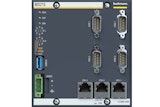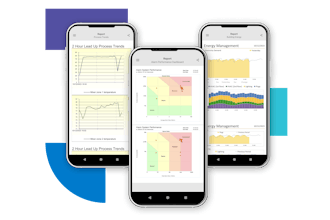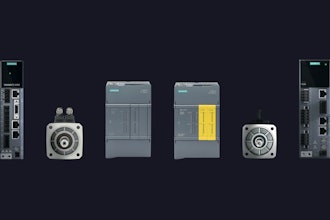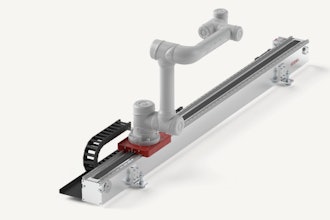Today’s global economic volatility has put increased pressure on the manufacturing supply chain. It is more important than ever to be able to respond quickly to changing market conditions. This becomes especially important as the U.S.-China trade relationship erodes over imposed tariffs, and politically charged NAFTA discussions test relationships with neighboring North American countries. Manufacturers, fabricators, component makers, industrial distributors, and suppliers are all affected by uncertainty and shifting market conditions. Fortunately with proactive insights, modern technology solutions can help manufacturers increase their agility and ability to manage the supply chain.
Defining the Supply Chain Conundrum
Politics and manufacturing make for strange bedfellows. Factories need stability and long-term planning to finetune processes and leverage economies of scale. On the other hand, politics often fuel change, disruption, and shifts in the economic landscape—sometimes abrupt and drastic. The Trump administration tariffs and renegotiation of trade agreements have caused upheaval in the industry. Some observers have voiced concerns about potential losses of jobs, higher costs to consumers and limited availability of U.S. resources, like steel and aluminum. Others note that addressing trade imbalances with China and the renegotiation of NAFTA are long overdue in creating labor standards that are consistently enforced and upheld.
It is certainly a complicated conversation. Two-thirds of economists surveyed in September 2018 said that trade or tariffs are the biggest risks to their economic growth forecasts in the next 12 months. But the current upheaval is just one wave in the ongoing tides of change. A global economy will continually be prone to disruption—whether caused by geo-political friction, weather extremes, mega-trends, or nationalistic policies.
No manufacturer, whether a family-run SMB or enterprise giant, is isolated from the potential impact of world commerce. It is a small world after all, and for many manufacturers it continues to shrink. As more remote consumers become “within reach” and more garage start-ups and emerging nation competitors move in next door, rocking the proverbial boat, it appears no manufacturer is safe from the possible risks of world commerce.
However, challenges have spurred innovation. Software that enhances the ability to mitigate potential risk and understand options gives procurement and supply chain executives powerful tools. With the right solutions in place, decision-making becomes simplified and is no longer a game of hunches and knee-jerk responses.
So Far, the Results of Tariffs Are Not Rosy
Bloomberg recently gathered comments from a wide variety of manufacturers who say they are negatively impacted by tariffs:
- The CEO of Ford, Jim Hackett, said tariffs on metals “took about $1 billion in profit from us.”
- The CEO of BP, Bob Dudley, predicts an impact of about $100 million in the U.S. due to increased steel costs.
- Caterpillar says it will boost prices to offset an expected $100 million to $200 million jump in tariff-related material costs.
There are Some Success Stories:
- ArcelorMittal, the world’s largest steelmaker trader, reported the highest profit in seven years after tariffs on imports boosted prices for production for the company’s U.S. plants.
Time for Action
The current state of the manufacturing supply chain flux will continue even once the back-and-forth sparring of tariffs and retributions have fizzled out. Some predict that this is the new normal. Furthermore, manufacturers would benefit from getting ready. They can invest in new solutions, foster new strategies, and step-up their supply chain planning and management capabilities. Now is the time to double-down on forecasting and planning tools. The further you can see down the road to the future, the more time you will have to prepare for bumps along the way.
The supply chain is never a “set-it-and-forget it” situation. Changes must be monitored, and strategies must be adapted. Agility is the magic word. Urgency is the driving force. Since products are increasingly complex with computerized components and subassemblies coming from multiple countries, the big picture can include multiple partners and suppliers. Elements must converge in the right place at the right time so customer orders—often for highly personalized products—can be fulfilled.
Eight factors make modern supply chain management especially challenging:
- The need for real-time visibility into the entire supply chain, end-to-end
- The difficulty maintaining quality standards from distant trading partners
- Complexity of products requires tracking versions and compatibility of components
- Varying compliance and regulation issues across borders and regions
- Consumer demand for highly personalized products increases complexity of planning
- The heightened need for traceability and verification of responsible sourcing
- Pressure to speed the ability to “sense and respond” to avoid shortages and delays
- Risk to Intellectual Property when turning to tier 2 and tier 3 suppliers as back-up sources
Technology Creates Opportunities
Fortunately, manufacturers have many options and tools they can turn to for overcoming these obstacles. Supply chain planning and supply chain execution technology has made huge strides in the last decade. Software providers have applied cloud computing, big data, business intelligence, machine learning, predictive analytics and artificial intelligence to solutions.
Outdated legacy solutions tend to be built on enterprise-centric systems, constructed in a hub-and-spoke model. But modern supply chains are not linear; they are hyperconnected networks of partners that span the globe. In a world of increasing speed and rapid change, the old linear model results in latency—both in data and in execution. In the time that it takes for data to pass along from one system to the next and generate an output, the data is likely outdated.
Meeting the challenges of tariffs and everyday supply chain risks start with a unified system that underpins the entire network, providing a digital connection for collaboration and visibility in real time. When all parties in a supply chain are plugged in, the information that was once locked away and invisible to the buyer or customer is suddenly visible. Updates from the outer nodes of the network are made in the system—live—and instantly reflected in this “digital twin” depiction of reality.
Dealing with the impact of tariffs—and any form of supply chain risk—requires network-like connectivity that engages all parties including carriers, 3PLs, banks and suppliers. In this environment, data flows from partners into the network, where it is harnessed for intelligent insights. AI and machine learning can identify patterns and spot problems before they happen. Opportunities to maximize inventory while meeting customer demands are uncovered through modeling, simulations and predictive analytics.
Supply chains are also empowered with data-driven recommendations for next steps to take in supply chain execution. The conversation moves away from, “How should we react and respond to this tariff or port strike or hurricane?” to “What opportunities can we uncover to improve performance and productivity today and in the future?” With visual tools, like dashboards and control panels, picturing key issues as they arise is easier than ever.
Manufacturers today must take advantage of all that technology can provide if they want to stay relevant and competitive. Enhancing supply chain management capabilities not only allows manufacturers to cope with global economic issues, like tariffs, but also empowers enterprises to be highly proactive and opportunistic. Agility is the key—and the future.
Nick Castellina is Director of Industry & Solution Strategy at Infor.























